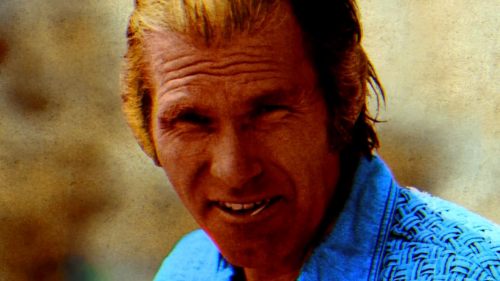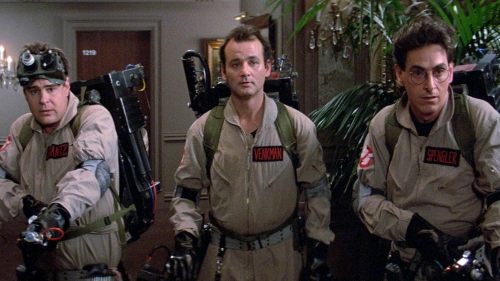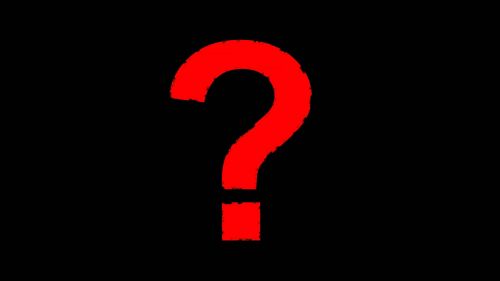Collins’ Crypt: What, No Alternate Version Of The New HALLOWEEN?
With Halloween (2018) (hereafter "H40" to make it easier) outgrossing every entry in the series even with inflation factored in, it's safe to assume there will be plenty of people picking up the Blu-ray at some point. Maybe not next week when it's released, because it's not exactly the season and it only closed from its last theaters a few days ago, so I'm not sure how many people will be in a rush to revisit just yet, but will definitely be a popular option in the fall. However, will it be the same disc people pick up then? It's a noticeably slim package compared to the other entries in the series, with only a handful of very brief featurettes and no commentary, making the deleted scenes section the only thing that might entice people to snatch it up now unless they're already itching to watch the movie again. Are they saving the meatier stuff for a re-release in September? Or even next year when the sequel will (likely) be hitting?
But unlike Rob Zombie's entries (or, goes without saying, The Curse of Michael Myers) the deleted scenes would not have changed the overall experience all that much if they were included in the movie. Most of them are of the "character moment" variety, giving you a little more insight or background into H40's very crowded cast, and even though director David Gordon Green (or anyone else) isn't around to verify, we can assume they were all cut for pacing, not because a producer demanded changes. No, it seems that, for the first time since maybe Halloween 4, there wasn't much of a debate over what direction the movie should go once it actually started shooting, with reshoot changes being minimal and not changing anything about the overall point/plot of the film. They did change the ending a bit, but if one were to sum them both up quickly they would be identical: Michael takes on the three Strode women and bangs Laurie up a bit, but ultimately loses the fight. It would have been fun to see, sure, but it's not like Zombie's sequel where the ending changes the fate of its lead character (spoiler, I guess: Laurie dies in RZ's superior director's cut of the 2009 Halloween II).
So even if they do double dip, I wouldn't count on there being too much more deleted footage than what is offered here. If you simply must know more than what the disc offers, I would suggest picking up the official novelization, which has all of the cut scenes that the Blu-ray reveals as well as a few more, not to mention one-off lines here and there that, if ever shot at all, were likely too inconsequential to warrant adding a "deleted scene" to present them. Had technology not "ruined" the original appeal of novelizations (without email and the like, authors would be forced to use older drafts of the script to get the book out on time, which is why older novelizations often have different endings and other changes) we might have been able to at least "read" the different ending, but nope, the novel has the same conclusion we all saw in theaters. With one exception, the stuff in the novel you didn't see onscreen is similar to the deleted scenes: it's mostly character development stuff that one could take or leave depending on how much time you want to spend with this or that person.
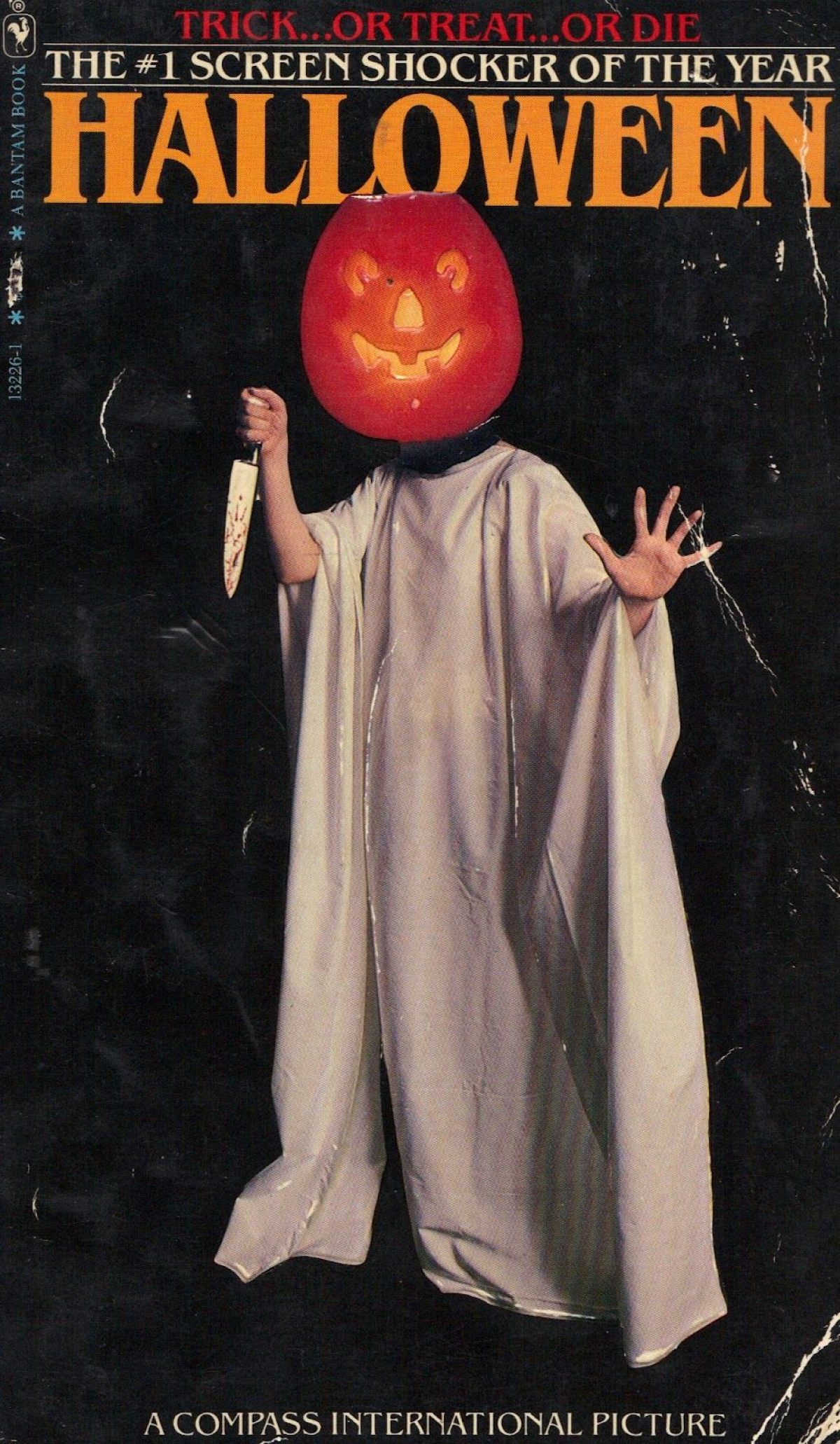
In other words, H40 author John Passarella is no Curtis Richards (very clever pseudonym for Richard Curtis), who wrote the novelization for the original 1978 film and took it upon himself to flesh things out to a great extent. If you've been "blessed" enough to read it you'd probably recall its totally goddamn insane (and, it goes without saying, never once intended to be part of the film) prologue, about a disfigured Celtic boy named Enda who is humiliated by a princess that he is in love with and murders her and her fiance on Halloween, before flashing forward to 1963 where we get even more "huh?" material in the form of Michael Myers' grandmother, who tells a story about her father murdering some people in the 19th century. He also adds to Michael's time in the asylum, noting that he learned to drive there, and suggests he killed a guard during his escape. For better or worse, Passarella doesn't take such liberties; he sticks to the script and apart from the inner monologues, doesn't create anything from scratch.
That said, the book's extra material and/or deleted scenes do shed some light on some of the film's vaguer elements, especially when it comes to poor Cameron Elam (Allyson's boyfriend). In the finished film, he has no redemption or any sendoff at all - after he tosses her phone into an extremely large bowl of nacho cheese, he is never seen or heard from again. Both the book and deleted scenes section present two additional moments with the character that, if they were left in, would have probably changed our overall opinion of the guy. One is brief, taking place sometime after school but before the dance, where he is chatting privately with his annoying friend Oscar and confiding in him that he really likes Allyson and is trying not to mess it up, before Allyson shows up and he gives her a little pep talk re: her family drama. It's a sweet bit that probably could have been included if not for the fact that the movie is kind of long for a slasher (105 minutes) and it wasn't telling us anything we necessarily *needed* to know.
The other is more substantial, and should have been included in my opinion. In the final cut, Allyson storms off from the party and the next time we see her she's with Oscar, walking down some random street and blowing off steam about Cameron's behavior. However, there was more to it - originally Cameron chased after her (retrieving her phone as well) and apologized, offering to buy her a new phone and reaffirming that he is trying to do the boyfriend thing, which is new to him. Then the cops showed up and antagonized him over his costume (if you recall, he was technically in drag, as the Bonnie to Allyson's Clyde), prompting him to get belligerent and subsequently get arrested. Oscar then shows up and the cops tell him to make sure Allyson gets home safe, explaining how they ended up together while confirming that Cameron didn't pull a Brady and go back to his mistress. The scene wasn't so long that it would have dragged anything in my opinion, and also would have not only given Cameron a better sendoff, but also redeemed him a bit. One thing about the film they definitely got right is that the teens are pretty likable, and it's a bummer that Cameron became an exception due to some editing.
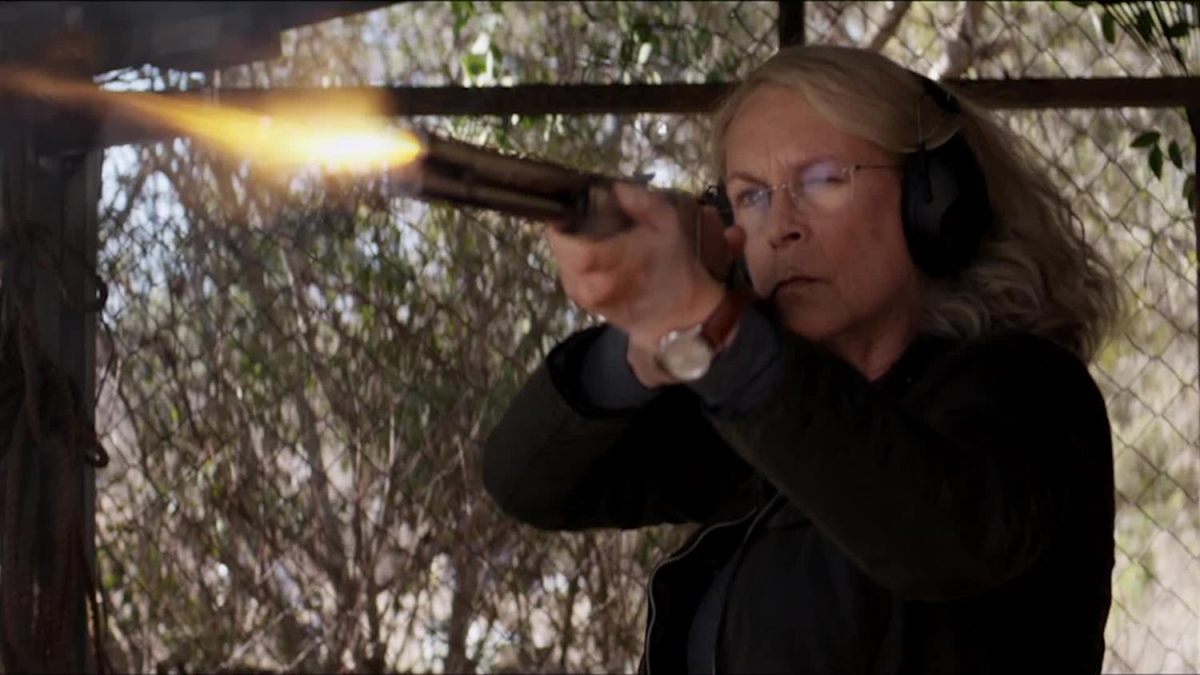
The deleted scenes also show us an extended look at Laurie practicing her shooting skills on her homemade firing range, though what's not clear is that it was meant to be her introduction. Per the novel and script I was able to read (which is seemingly the same one Passarella was working from, i.e. pretty close to the final), this is how we were supposed to be reintroduced to Laurie, prior to the podcasters showing up at her front gate. But that changed at some point, and now we first see her as she sits down to talk to them, already in her house, with the firing range stuff repurposed (and shortened) to be used later. Whether it was the right change or not is a matter of opinion, but one thing that was definitely lost (besides a look at her lengthy shoulder scar, which we only see for about a frame in the finished film when she's cleaning the guns - sorry, makeup artist!) is a chilling bit where she loads a single bullet in a revolver and puts the gun to her jaw, only for the podcasters' arrival to snap her out of it. This is the only bit of Laurie's shattered state that the deleted scenes really offers, but the book gives us even more since we're in her head a lot, as well as some more fun banter between her and Ray (Toby Huss) that I wish I could have seen the two actors sink their teeth into.
The book also gives us some closure for Julian (Jibrail Nantambu), the hilarious kid that's being babysat by Vicky (Virginia Gardner). In the film he just runs off, presumably safe, but here we learn that he ran to the neighbor's and it was them that called the police, prompting Will Patton's Hawkins character to respond to that call. In fact this section of the book as a whole is somewhat different from the film; many of the specifics change (Vicky goes to the closet not to close the door, but to turn on the light for a scared Julian) and Dave's death is actually depicted, something even the deleted scenes do not offer (whether it was ever shot is unknown; it's not in the draft of the script I read, either). Also, Nantambu's hilarious ab-libs ("cutting my nasty ass toenails...") are MIA from the novel, naturally, and Vicky doesn't prank the poor kid by pretending to see the Boogeyman, so the scene as a whole is less fun in the text.
The other deleted scenes are largely useless. In one we learn that the podcasters are romantically involved, as if that matters, and in another a jogging Allyson discovers a dead dog hanging in a neighbor's yard, which would tell us that Michael still likes to kill dogs while also adding Andi Matichak to the endless list of young actresses who have a jogging scene in a horror film. The book, at least, gives us a previous jogging scene where she meets the dog when it was still alive, setting up this "payoff", but for whatever reason the Blu-ray doesn't include it (it was in the test screening, so the setup scene was definitely shot). Then there's an extended talk between the two cops about Banh Mi sandwiches, as well as a scene that I am assuming is really just an outtake of Patton and Haluk Bilginer (Dr. Sartain) goofing off, as it's not in the script or the book and is mainly focused on Sartain picking his nose.

The novelization, at least, gives a few more scenes that may or may not have been shot (or even in the script) but are at least more interesting than those. One that I really liked was the ride from Karen's to Laurie's, where Laurie (in the squad car's backseat) complains about the uncomfortable seats and later makes the cops avert their eyes so she can type in the code for her front gate, not even trusting them. We also find out that the Myers house was eventually torn down and turned into a garden, and there's even a brief mention of Sheriff Brackett to make hardcore fans like me smile a little. Passarella also fleshes out some scenes to explain away things that seem coincidental in the movie, such as Michael being at the cemetery when the podcasters show up (he wasn't visiting the grave again - he was specifically waiting for them, knowing they would come poking around eventually) or Allyson finding herself right on the edge of Laurie's property (she gives Sartain the address, gambling that the well-armed Laurie would just kill Sartain and Michael both). Also, I don't know why it was changed, but I had to laugh that Passarella specifically notes that Sartain is careful to drive around Hawkins' corpse, when in the movie he purposely drives over it.
Then again, he seems to have some kind of aversion to the violence - most of the kill/suspense scenes are raced through, including the climax, as if he just wanted to get them over with. The film has a number of off-screen kills, for whatever reason, but except for Dave's the author didn't feel the need to embellish any of those unseen murders (such as the ones at the gas station, or of the two cops). He seems much more at ease describing the setting of various scenes (we get a full rundown of the food available at the Halloween dance, for example) and what people are wearing, so if you're inexplicably reading the book without having seen the movie you'll have no problem forming the mental images in your head. You'll also get bizarre diversions, like when Laurie sees the tipped motorcycle in Julian's garage and wonders if Michael knows how to ride one (he seems particularly curious about the motorcycle, since we're also treated to Dave's musings on which parent it belonged to, when they got it, if Julian's arrival made them stop using it, etc.), and giving us about two pages of inner monologue from the unnamed lady Michael kills in her kitchen. Wondering how she likes her sandwich and how long she has had her frozen chicken thawing? The book will ease your troubled mind.
But despite all these little changes, the deleted scenes and book prove that the film was largely left intact, and even without anyone on hand to say so via commentary we can assume pretty much everything was cut for time or as a necessity when things got moved around a bit (such as Laurie's suicidal thoughts - they would have had to come up with a different reason for her to snap out of it, since the podcasters had already come and gone in this sequencing). I'm sure some fan will edit the scenes back into the movie, but it won't give anyone a different opinion of the film as a whole. H40 had a few narrative issues, some of which this stuff fixes or at least smooths over, but nothing even remotely crippling, and I stand by my opinion that erasing the other sequels was the right way to go. The relative dearth of excised material just kind of proves that Green and his team knew what they were doing and weren't overthinking things, and that's why, for the first time in nearly 30 years, a Halloween movie is more entertaining than the behind the scenes stories of its creation.

